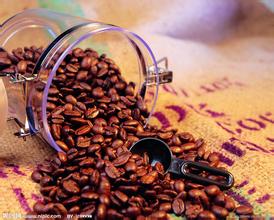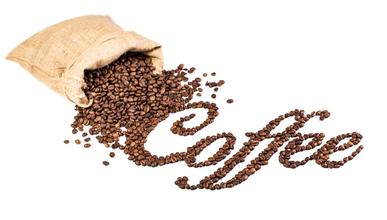On the taste characteristics of coffee producing areas in Colombia which countries are the main exports of manors?
On the taste characteristics of coffee producing areas in Colombia which countries are the main exports of manors?
The farms in Tolima are generally slightly larger than those in other southern Colombian producing areas, ranging from 10 to 15 hectares. The cooperative approach is also popular here, where farmers send their small batches of fresh coffee and fruit to the cooperative's processing plant. Some farmers will also choose to deal with it on their own, making use of their own small-scale treatment facilities that can handle the harvest of the day. Carefully processed raw beans can be negotiated according to the cup test results, and a few batches that are outstanding will be kept as "micro batches", microlot, and sent to Bogota, the capital, for further cup testing. The rest of the raw beans are usually mixed and sold according to the cup flavor.
Colombian coffee is located in the Andes, where the mild climate, humid air and good rainfall make it very suitable for coffee growth. according to its geographical location, Colombian coffee is divided into three producing areas: northern, central and southern, in which there are six high-quality coffee producing areas in Colombia, Sierra Nevada,Santander, Cauca, Huila,Nari ñ o and Paisaje cultural cafetero.
The eastern mountain range has rugged terrain, steep slopes and an altitude of 4000 meters. The climate is affected by different elevations, which makes it show a variety of meteorological zones, resulting in a rich aroma of coffee and moderate acidity. Smooth and consistent with tobacco flavor
The main varieties of Colombian coffee are small grains of coffee. Plants are small trees or large shrubs, 5-8 m tall, usually much branched at base; old branches gray-white, nodes dilated, young branches glabrous, compressed. Leaves thinly leathery, ovate-lanceolate or lanceolate, 6-14 cm long and 3.5-5 cm wide, apex long acuminate, acuminate part 10-15 mm long, base cuneate or slightly obtuse, rarely rounded, entire or shallowly wavy, both surfaces glabrous, lower vein axils with or without small pores; midrib raised on both surfaces of leaf, 7-13 on each side of lateral veins; petiole 8-15 mm long Stipules broadly triangular, arising from apical cone-shaped tip or awn tip of upper part of young shoots
No matter in terms of yield or texture, Colombian coffee is first produced by Medellin, which is characterized by full granules, rich nutrition, moderate acidity, good balance, rich aroma and soft taste. In addition to Medellin, the provincial capitals of the two neighboring provinces in the south, Armenia and Manizales, are also famous coffee producers, which formerly belonged to Medellin's Andiquio province.

Important Notice :
前街咖啡 FrontStreet Coffee has moved to new addredd:
FrontStreet Coffee Address: 315,Donghua East Road,GuangZhou
Tel:020 38364473
- Prev

Flavor description of Sidamo Shakiso Coffee Bean production area A brief introduction to the method of grinding and calibration of taste varieties
A brief introduction to the Flavor description of Sidamo Shaquiso Coffee Bean production area A brief introduction to the method of Grinding and Calibration of Sidamo Coffee Bean Shakisso/Shakiso is located in the Guji producing area of Sidamo and is one of the micro-producing areas with regional characteristics in Sidamo. The coffee in this region is quite unique, and the coffee produced is often noticed by the market. Ninety Plus's legendary beans (nekisse)
- Next

A detailed introduction to the manor of the growing area of Brazilian Minas Coffee
The Flavor characteristic Price of Brazilian Minas Coffee A detailed introduction to the growing area of Brazilian Minas Coffee Coffee beans are treated with pulped natural and dried in the sun, that is, the coffee is mechanically peeled, leaving the seeds and pulp of the coffee, and then sun-dried. The harvest season is from March to June every year, and this batch of beans is the latest batch of beans. This bean is from Minah, Brazil.
Related
- Detailed explanation of Jadeite planting Land in Panamanian Jadeite Manor introduction to the grading system of Jadeite competitive bidding, Red bid, Green bid and Rose Summer
- Story of Coffee planting in Brenka region of Costa Rica Stonehenge Manor anaerobic heavy honey treatment of flavor mouth
- What's on the barrel of Blue Mountain Coffee beans?
- Can American coffee also pull flowers? How to use hot American style to pull out a good-looking pattern?
- Can you make a cold extract with coffee beans? What is the right proportion for cold-extracted coffee formula?
- Indonesian PWN Gold Mandrine Coffee Origin Features Flavor How to Chong? Mandolin coffee is American.
- A brief introduction to the flavor characteristics of Brazilian yellow bourbon coffee beans
- What is the effect of different water quality on the flavor of cold-extracted coffee? What kind of water is best for brewing coffee?
- Why do you think of Rose Summer whenever you mention Panamanian coffee?
- Introduction to the characteristics of authentic blue mountain coffee bean producing areas? What is the CIB Coffee Authority in Jamaica?

